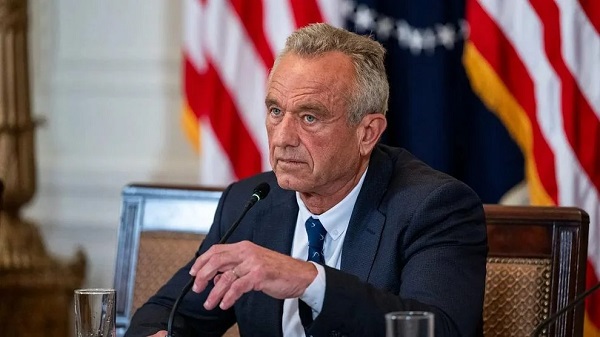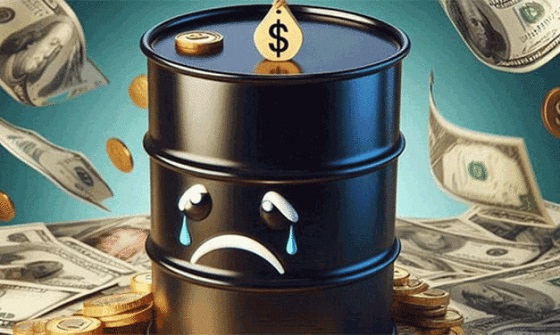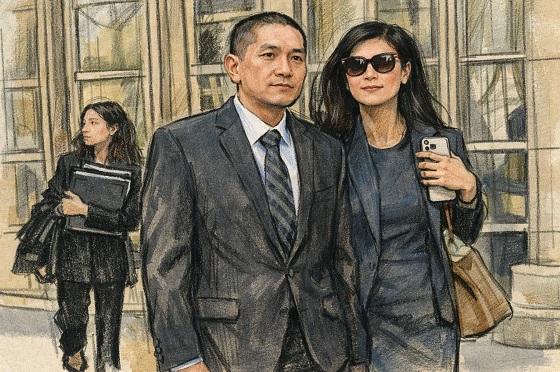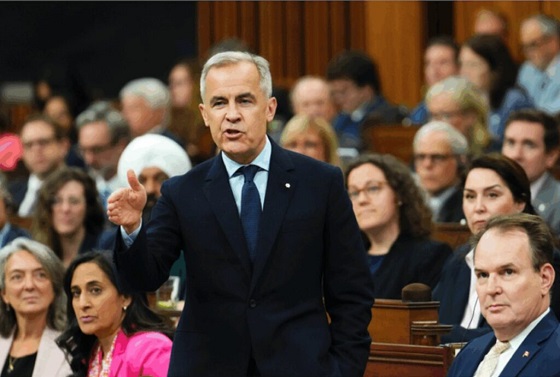Uncategorized
Bill Cosby gets 3 to 10 years in prison for sex assault

NORRISTOWN, Pa. — His Hollywood career and good-guy image in ruins, Bill Cosby was led off to prison in handcuffs Tuesday at age 81, sentenced to three to 10 years behind bars for drugging and sexually assaulting a woman.
The punishment made him the first celebrity of the #MeToo era to be sent to prison and all but completed the dizzying, late-in-life fall from grace for the comedian, former TV star and breaker of racial barriers.
“It is time for justice. Mr. Cosby, this has all circled back to you. The time has come,” Montgomery County Judge Steven O’Neill said. He quoted from victim Andrea Constand’s own statement to the court, in which she said Cosby took her “beautiful, young spirit and crushed it.”
Cosby declined the opportunity to speak before the sentence came down, and afterward sat smiling, laughing and chatting with his
Cosby’s lawyers asked that he be allowed to remain free on bail while he appeals his conviction, but the judge appeared incredulous over the request and ordered him locked up immediately, saying that “he could quite possibly be a danger to the community.”
The comedian removed his watch, tie and jacket and walked out in a white dress shirt and red suspenders, his hands cuffed in front of him.
Former model Janice Dickinson, who was among the 60 or so women who have come forward to accuse Cosby of drugging and violating them over the past five decades, looked at Cosby and said: “Here’s the last laugh, pal.”
Another Cosby accuser in the courtroom, Lili Bernard, said: “There is solace, absolutely. It is his fame and his fortune and his
The punishment, which also included a $25,000 fine, came at the end of a two-day hearing at which the judge declared Cosby a “sexually violent predator” — a modern-day scarlet letter that subjects him to monthly
The comic once known as America’s Dad for his role on the top-rated “Cosby Show” in the 1980s was convicted in April of violating Constand, Temple University women’s basketball administrator, at his suburban Philadelphia estate in 2004. It was the first celebrity trial of the #MeToo era.
Cosby faced a sentence of anywhere from probation to 10 years in prison. His lawyers asked for house arrest, saying Cosby — who is legally blind — is too old and vulnerable to do time in prison. Prosecutors asked for five to 10 years behind bars, saying he could still pose a threat to women.
Montgomery County District Attorney Kevin Steele rejected the notion that Cosby’s age and infirmity entitle him to mercy. “He was good at hiding this for a long time. Good at suppressing this for a long time. So it’s taken a long time to get there,” Steele said.
The sentencing came as another extraordinary #MeToo drama unfolded on Capitol Hill, where Supreme Court nominee Brett Kavanaugh stands accused of sexual misconduct more than three decades ago.
The Cosby case “really raised awareness of the pervasiveness of … sexual misconduct against subordinates and against women of relatively less power,” said Daniel Filler, dean of Drexel University’s law school. “For jurors, I think it’s inherently changed the credibility of the accusers.”
The judge ruled on Cosby’s “sexually violent predator” status after a psychologist for the state testified that the entertainer appears to have a mental disorder that gives him an uncontrollable urge to have sex with women without their consent. When the ruling came down, a woman in the courtroom shot her fist into the air and whispered, “Yessss!”
In a statement submitted to the court and released Tuesday, Constand, 45, said that she has had to cope with years of anxiety and self-doubt. She said she now lives alone with her two dogs and has trouble trusting people.
“When the sexual assault happened, I was a young woman brimming with confidence and looking forward to a future bright with possibilities,” she wrote in her five-page statement. “Now, almost 15 years later, I’m a middle-aged woman who’s been stuck in a holding pattern for most of her adult life, unable to heal fully or to move forward.”
She also wrote of Cosby: “We may never know the full extent of his double life as a sexual predator, but his decades-long reign of terror as a serial rapist is over.”
The AP does not typically identify people who say they are victims of sexual assault unless they come forward publicly, which Constand and other accusers have done.
Constand went to police a year after waking up in a fog at Cosby’s gated estate, her clothes askew, only to have the district attorney pass on the case.
Another district attorney reopened the file a decade later and charged the TV star after stand-up comic Hannibal Buress’ riff about Cosby being a rapist prompted more accusers to come forward and after a federal judge, acting on a request from The Associated Press, unsealed some of Cosby’s startling, decade-old testimony in Constand’s related civil suit.
In his testimony, Cosby described sexual encounters with a string of actresses, models and other young women and talked about obtaining quaaludes to give to those he wanted to sleep with.
Cosby’s first trial in 2017 ended with a hung jury. He was convicted at a retrial that opened months after the #MeToo movement had taken down such figures as Hollywood studio boss Harvey Weinstein, NBC’s Matt Lauer, actor Kevin Spacey and Sen. Al Franken.
Constand said Cosby gave her what she thought were herbal pills to ease stress, then penetrated her with his fingers as she lay immobilized on a couch. Cosby claimed the encounter was consensual, and his lawyers branded her a “con artist” who framed the comedian to get a big payday — a $3.4 million settlement she received over a decade ago.
Five other accusers took the stand at the trial as part of an effort by prosecutors to portray him as a predator.
Cosby, whose estimated fortune once topped $400 million, broke barriers in the 1960s as the first black actor to star in a network show, “I Spy.” He went on to superstardom as wise and understanding Dr. Cliff Huxtable on “The Cosby Show,” a sitcom that showed America a new kind of black TV family: a warm and loving household led by two professionals, one a lawyer, the other a doctor.
He also found success with his Saturday morning cartoon “Fat Albert,” appeared in commercials for Jello-O pudding and became a public moralist, lecturing the black community about young people stealing things and wearing baggy pants. He won a Presidential Medal of Freedom and countless Emmys, Golden Globes and Grammy awards.
As the allegations mounted, his career all but collapsed, “Cosby Show” reruns were taken off the air, and one college after another stripped him of his honorary degrees.
___
Associated Press writer Claudia Lauer contributed to this report.
Maryclaire Dale And Michael R. Sisak, The Associated Press
Uncategorized
Cost of bureaucracy balloons 80 per cent in 10 years: Public Accounts

The cost of the bureaucracy increased by $6 billion last year, according to newly released numbers in Public Accounts disclosures. The Canadian Taxpayers Federation is calling on Prime Minister Mark Carney to immediately shrink the bureaucracy.
“The Public Accounts show the cost of the federal bureaucracy is out of control,” said Franco Terrazzano, CTF Federal Director. “Tinkering around the edges won’t cut it, Carney needs to take urgent action to shrink the bloated federal bureaucracy.”
The federal bureaucracy cost taxpayers $71.4 billion in 2024-25, according to the Public Accounts. The cost of the federal bureaucracy increased by $6 billion, or more than nine per cent, over the last year.
The federal bureaucracy cost taxpayers $39.6 billion in 2015-16, according to the Public Accounts. That means the cost of the federal bureaucracy increased 80 per cent over the last 10 years. The government added 99,000 extra bureaucrats between 2015-16 and 2024-25.
Half of Canadians say federal services have gotten worse since 2016, despite the massive increase in the federal bureaucracy, according to a Leger poll.
Not only has the size of the bureaucracy increased, the cost of consultants, contractors and outsourcing has increased as well. The government spent $23.1 billion on “professional and special services” last year, according to the Public Accounts. That’s an 11 per cent increase over the previous year. The government’s spending on professional and special services more than doubled since 2015-16.
“Taxpayers should not be paying way more for in-house government bureaucrats and way more for outside help,” Terrazzano said. “Mere promises to find minor savings in the federal bureaucracy won’t fix Canada’s finances.
“Taxpayers need Carney to take urgent action and significantly cut the number of bureaucrats now.”
Table: Cost of bureaucracy and professional and special services, Public Accounts
| Year | Bureaucracy | Professional and special services |
|
$71,369,677,000 |
$23,145,218,000 |
|
|
$65,326,643,000 |
$20,771,477,000 |
|
|
$56,467,851,000 |
$18,591,373,000 |
|
|
$60,676,243,000 |
$17,511,078,000 |
|
|
$52,984,272,000 |
$14,720,455,000 |
|
|
$46,349,166,000 |
$13,334,341,000 |
|
|
$46,131,628,000 |
$12,940,395,000 |
|
|
$45,262,821,000 |
$12,950,619,000 |
|
|
$38,909,594,000 |
$11,910,257,000 |
|
|
$39,616,656,000 |
$11,082,974,000 |
Uncategorized
Trump Admin Establishing Council To Make Buildings Beautiful Again


From the Daily Caller News Foundation
By Jason Hopkins
The Trump administration is creating a first-of-its-kind task force aimed at ushering in a new “Golden Age” of beautiful infrastructure across the U.S.
The Department of Transportation (DOT) will announce the establishment of the Beautifying Transportation Infrastructure Council (BTIC) on Thursday, the Daily Caller News Foundation exclusively learned. The BTIC seeks to advise Transportation Secretary Sean Duffy on design and policy ideas for key infrastructure projects, including highways, bridges and transit hubs.
“What happened to our country’s proud tradition of building great, big, beautiful things?” Duffy said in a statement shared with the DCNF. “It’s time the design for America’s latest infrastructure projects reflects our nation’s strength, pride, and promise.”
“We’re engaging the best and brightest minds in architectural design and engineering to make beautiful structures that move you and bring about a new Golden Age of Transportation,” Duffy continued.
Mini scoop – here is the DOT’s rollout of its Beautifying Transportation Infrastructure Council, which will be tasked with making our buildings beautiful again. pic.twitter.com/
9iV2xSxdJM — Jason Hopkins (@jasonhopkinsdc) October 23, 2025
The DOT is encouraging nominations of the country’s best architects, urban planners, artists and others to serve on the council, according to the department. While ensuring that efficiency and safety remain a top priority, the BTIC will provide guidance on projects that “enhance” public areas and develop aesthetic performance metrics.
The new council aligns with an executive order signed by President Donald Trump in August 2025 regarding infrastructure. The “Making Federal Architecture Beautiful Again” order calls for federal public buildings in the country to “respect regional architectural heritage” and aims to prevent federal construction projects from using modernist and brutalist architecture styles, instead returning to a classical style.
“The Founders, in line with great societies before them, attached great importance to Federal civic architecture,” Trump’s order stated. “They wanted America’s public buildings to inspire the American people and encourage civic virtue.”
“President George Washington and Secretary of State Thomas Jefferson consciously modeled the most important buildings in Washington, D.C., on the classical architecture of ancient Athens and Rome,” the order continued. “Because of their proven ability to meet these requirements, classical and traditional architecture are preferred modes of architectural design.”
The DOT invested millions in major infrastructure projects since Trump’s return to the White House. Duffy announced in August a $43 million transformation initiative of the New York Penn Station in New York City and in September unveiledmajor progress in the rehabilitation and modernization of Washington Union Station in Washington, D.C.
The BTIC will comprise up to 11 members who will serve two-year terms, with the chance to be reappointed, according to the DOT. The task force will meet biannually. The deadline for nominations will end Nov. 21.
-

 Health2 days ago
Health2 days agoRFK Jr reversing Biden-era policies on gender transition care for minors
-

 Business1 day ago
Business1 day agoGeopolitics no longer drives oil prices the way it used to
-

 Business1 day ago
Business1 day agoArgentina’s Milei delivers results free-market critics said wouldn’t work
-

 Alberta2 days ago
Alberta2 days agoAlberta’s new diagnostic policy appears to meet standard for Canada Health Act compliance
-

 Censorship Industrial Complex2 days ago
Censorship Industrial Complex2 days agoCanadian university censors free speech advocate who spoke out against Indigenous ‘mass grave’ hoax
-

 Business1 day ago
Business1 day agoDeadlocked Jury Zeroes In on Alleged US$40 Million PPE Fraud in Linda Sun PRC Influence Case
-

 Daily Caller2 days ago
Daily Caller2 days agoEx-FDA Commissioners Against Higher Vaccine Standards Took $6 Million From COVID Vaccine Makers
-

 COVID-192 days ago
COVID-192 days agoFreedom Convoy protester appeals after judge dismissed challenge to frozen bank accounts










